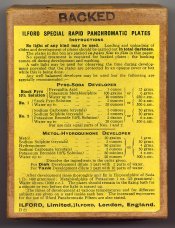Personally, I can't think of any reason to use an acid stop bath for film developing. As has been pointed out by many posters, based on their own experience, and in many cases based on direct comparisons between acid stop baths and water stop baths, water works just fine.
Now let's think about this from a fundamental point of view. There have been comments that an acid stop bath produces instant arrest of developing. First, that comment is not quite true because it takes a little bit of time for the acid to be transported into the film. Furthermore, while this is happening the developer will be diffusing out of the film. This happens whether one is using acid stop bath or pure water. The time scale for the diffusion of developer out of the film is probably not much longer than the time scale for diffusion of acid into the film. My wild guess is that the diffusion rate of developer out of the film is probably within a factor four or so of the diffusion rate of acid into the film. (Any definitive information on this point would be helpful.)
Since the time scales of the two processes (diffusion of acid in and diffusion of developer out) are likely on a comparable time scale, use of an acid stop bath is not likely to make much difference in the effective time for halting of development.
Furthermore, there are at least two other process that will effectively stop the development of film. The first is that even with the use of pure water there will be a rapid change in the pH inside the film, resulting in a serious reduction in development rate. This will happen because hydroxide ions diffuse out of the emulsion. (I am assuming that the water is not highly alkaline.) The second is that developer trapped in the emulsion will be depleted by being used up, and it cannot be replenished by the bulk developer solution because the developer solution is not there any more.
I do not know of any measurements, but all things considered I would be surprised if there were more than a few seconds difference in effective stop time using water vs. acid.
However, the most important consideration is this. It is not important that development be stopped instantaneously. It is only important that the arresting of development be reproducible, and there is no physical reason that I can think of that would cause a water stop bath to be significantly less reproducible than an acid stop bath. Even if a water stop bath were less reproducible than an acid stop bath by a few seconds, that is not enough irreproducibility to make a noticeable difference in film development. My goodness, there are so many other sources of irreproducibility in film development that a few seconds of effective jitter aren't going to be noticeable.
As a final comment, a water stop bath is the recommended method by the maker of one of the most reproducible automated film development systems, namely Photo-Therm.
And now for a post-final comment. Acetic acid stinks, so I would rather not have it around. Non-stinky citric acid could be used, but why bother with the extra expense and fiddle factor when you can just use water?






 :rolleyes:
:rolleyes:

 :confused:
:confused:

